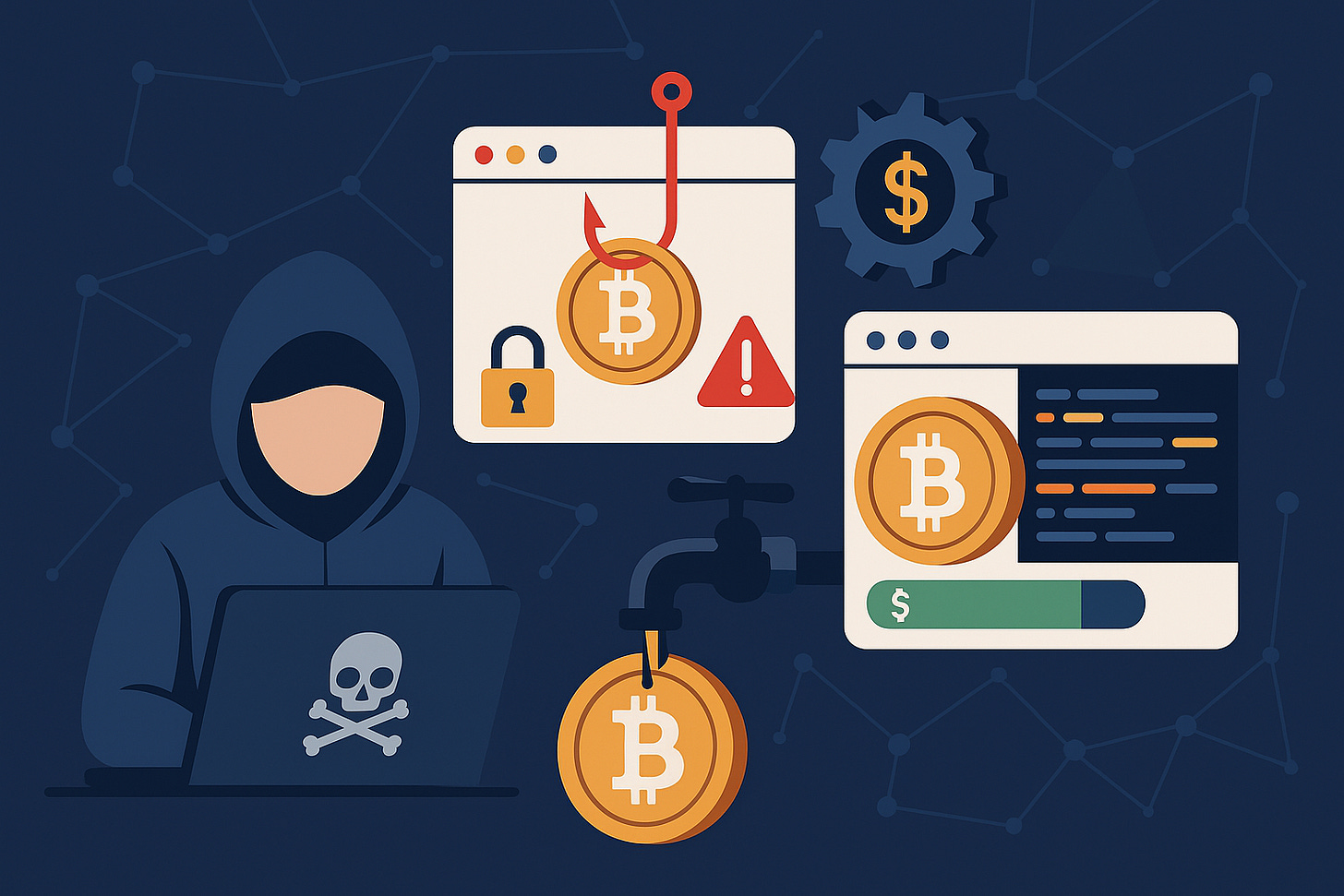Crypto Drainers: Understanding the Threat Landscape
How Cybercriminals Leverage Ready-made Tools to Steal Cryptocurrency—and What You Can Do to Protect Yourself
Cryptocurrencies have rapidly gained popularity, not only among tech-savvy users but also among cybercriminals seeking easy financial gain. One particularly dangerous cyberthreat emerging from this trend is “crypto drainers-as-a-service.” In essence, these malicious services provide pre-packaged tools and infrastructure that criminals use to siphon cryptocurrency from victims. Understanding this threat is critical for developers, cryptocurrency holders, and security professionals.
What are Crypto Drainers-as-a-Service?
Crypto drainers are specialized malware or malicious scripts specifically designed to steal cryptocurrencies from digital wallets or transactions. As-a-service indicates that these tools are now offered through subscription models (🙃) or single-purchase options on underground forums or dark web marketplaces.
Cybercriminals no longer need advanced technical knowledge or significant resources to conduct attacks; they can simply purchase ready-made drainers and immediately deploy them.
How Do Crypto Drainers Work?
Crypto drainers typically operate through phishing websites, compromised web applications, malicious browser extensions, or infected downloads. Here’s the common workflow:
Phishing or Impersonation:
Attackers set up fake websites or clone legitimate cryptocurrency platforms, wallets, or NFT marketplaces.
Victims are tricked into entering their private keys or seed phrases into these fraudulent sites.
Browser Extension Malware:
Malicious browser extensions secretly monitor clipboard activities or intercept data entered into legitimate cryptocurrency sites, stealing sensitive wallet information.
Web Application Exploits:
Attackers inject malicious scripts into compromised legitimate websites. These scripts silently intercept user inputs related to cryptocurrency transactions, wallet addresses, or private keys.
Drainers-as-a-Service Ecosystem
The drainer-as-a-service ecosystem consists of several key roles and components:
Developers: They create the malicious software or scripts.
Operators: Individuals who purchase these tools, manage phishing campaigns, and execute attacks.
Infrastructure Providers: Entities or individuals supplying hosting services, domains, and servers, often employing anonymity tools to avoid detection.
Money Laundering Services: Cybercriminals rely on services such as cryptocurrency mixers or tumblers to launder stolen funds, complicating recovery and tracing efforts.
Why is Drainers-as-a-Service Thriving?
Several factors fuel the growth of the drainers-as-a-service threat:
Low Entry Barriers: Ready-made drainers significantly reduce the technical expertise required to conduct cryptocurrency theft.
High Returns: Cryptocurrency theft often yields substantial profits, given the relative ease of converting stolen assets into fiat money via anonymous exchanges or mixers.
Difficulty of Attribution: The pseudonymous nature of cryptocurrencies and decentralized services makes it challenging for law enforcement to trace and apprehend perpetrators.
Persistent Demand: The growing adoption and popularity of cryptocurrencies and NFTs provide a continuous supply of potential victims.
Common Features Offered by Crypto Drainers
Crypto drainer services offer various capabilities, typically including:
Wallet Support: Compatibility with popular wallets such as MetaMask, Trust Wallet, Phantom, and others.
Customizable Interfaces: User-friendly dashboards to monitor stolen funds, manage phishing pages, and track victim interactions.
Stealth Mechanisms: Advanced evasion techniques, including automatic domain rotation, proxy integration, and encryption methods to hide malicious activities.
Payment and Subscription Models: Users can either pay a one-time fee or subscribe to regular updates and support, receiving ongoing malware updates to bypass security defenses.
Real-world Impact
Crypto drainers-as-a-service have already resulted in significant losses. Notable examples include:
NFT Marketplace Scams: Fraudulent marketplaces trick users into authorizing malicious transactions, stealing their NFTs or tokens.
Clipboard Hijacking: Malware replacing copied wallet addresses, causing victims to unknowingly send crypto assets directly to attacker-controlled wallets.
Fake Airdrops and Giveaways: Attackers lure users into connecting wallets to malicious sites under the guise of promotional giveaways, promptly draining funds.
How Can Users and Developers Protect Themselves?
Prevention is paramount. Here are several critical practices to mitigate the risks:
For Users:
Always verify URLs carefully. Bookmark frequently visited cryptocurrency sites.
Never share your private keys or seed phrases.
Use hardware wallets for additional protection against malicious software.
Keep browsers and extensions updated, and limit extension installations to reputable sources.
For Developers and Organizations:
Employ robust security monitoring and threat detection tools to identify suspicious web activities.
Implement Content Security Policy (CSP) to prevent unauthorized script execution.
Conduct regular security audits of web applications and ensure timely patching of vulnerabilities.
Educate users frequently about phishing risks and security best practices.
🔍 TL;DR Summary
Crypto drainers-as-a-service provide criminals with ready-to-use malware to steal cryptocurrencies through phishing, browser extensions, and compromised websites. Driven by ease-of-use, high profitability, and difficulty of detection, this threat continues to expand rapidly. To protect yourself, carefully verify URLs, secure wallets, use hardware wallets, regularly update software, and employ robust security practices.




